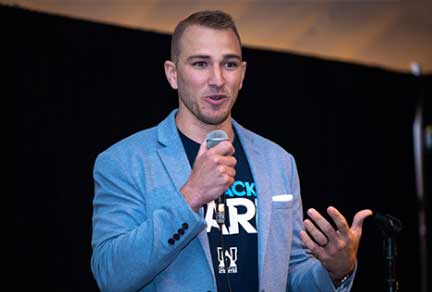Studying rare cancer patient populations using integrated genomic and real-world data
By Sivakumar Gowrisankar, Ph.D., Director, Genomic Medicine and Jason Gagner MBA, MS, Scientific Data Strategy Senior Director
Among the most exciting aspects of drug development today is the ability to bring together advances in genomics, real-world data, and technology in clinical trials – thereby making the patient experience more meaningful while dramatically accelerating processes. Rapid advances in science and technology allow for greater detail and capture into precision medicine techniques such as genetic sequencing and identification of better biomarkers.
Keeping the focus on the patient living with the disease
Parexel is at the cutting edge of these innovations, as recently demonstrated by a solution we developed for a challenging study of rare diseases. For this case, we brought together the needs of the patient, medical advances, and available technologies, which typically operate separately, to keep the patient at the forefront as the central element of the trial.
We focused on a well-studied biomarker and leveraged structured genomics and real-world data to capture valuable patient outcomes to create a repeatable scenario. A tokenization-based approach gave us insights into real-world testing scenarios, molecular tests, treatments, and survival. Using de-identified patient tokens protects patient privacy while tracking unique patients longitudinally and across different data sources. Integration of genomics with other data sources provides potential insights into novel or understudied patient populations.
For this study, Parexel partnered with a diagnostics lab that was conducting large-scale assessments of genomic biomarkers for cancer patients and integrated that data with claims data to expand the scope of the insights. This enabled us to create a holistic picture for those patients, identify what treatments work best for them, and thereby inform our clients about where to focus their development programs. The highly scalable solution that resulted, an alternative to chart-based abstractions, has the potential for many indications and types of biomarkers.
Understanding real-world experience to capture patient outcomes
Our client was designing a single-arm study for a rare cancer population with a dynamic range of treatment options and diagnostic patterns. In a situation like this, with so many variables, understanding the patient’s real-world experience was essential to ensure that the trial would capture genuine patient outcomes. Yet real-world genomics data is less available than other data sources because it is often embedded in electronic health and medical records. The challenge was to determine how to design the trial to assess the patient population in a real-world setting, with sensitivity to the person living with the disease.
The typical approach would be to employ literature-based evidence. But the literature and new treatments are constantly evolving. Furthermore, during the evaluation and conduct of the trial or for approval, the regulatory agency might raise a specific question that must be answered based on data that reflects the patient’s current experience. And those questions must be answered quickly.
Every sponsor today is under time pressure, and this case was no different. Competitive demands are always a consideration, but the desire to create molecules and get them to market to help patients who might not have much time left is much more urgent.
At the same time, the rapid advances in science and technology and the availability of new data sources have resulted in potential inconsistencies that could have the opposite effect: harming the patient. Harmonizing the data to ensure that it generates reliable, consumable evidence is paramount. At Parexel, we are responsible for evaluating the data from different sources and how they interact, harmonizing it, and creating a cohesive picture that our clients can trust as they develop their strategies going forward.
Building predictive models to inform trial design
Before starting the trial, we intended to model scenarios to illustrate the patient care journey and the various influences that impact patient outcomes, covering a broad spectrum of touchpoints, endpoints, and elements. We focused on some of the social determinants of health data. For example, we evaluated the time that elapsed from the point of diagnosis and the patient’s enrollment in the clinical trial and determined if there was a specific demographic that enrolled in the trial sooner than others and if the disparity observed likely was caused by social and economic factors, and race or gender factors?
We might identify a certain demographic or region and find that there are mitigating factors for participation in the trial. We could plan around them to reduce the burden on the patient, incorporating technology into the trial design to increase access and convenience. Sometimes, the trial’s burdens outweigh the treatment’s benefits, and we want to eliminate that friction and make the participants feel valued and appreciated. We can do that with all this data; it doesn’t matter if it’s a rare disease or a chronic illness.
This thorough examination helped us ensure an all-encompassing approach to enrolling a representative population sample. In turn, this insight helped us identify where the need is greatest and who is best suited for treatment by that molecule, as well as informing critical decisions about selecting the right study sites and physicians.
While this diligence at the outset took time, we avoided the delays that could result from enrolling the wrong subjects and sites. Using global data to generate evidence and support our clients before starting the trial saved significant time and removed potential pitfalls in the study. This, in turn, enabled us to identify new insights and optimize the protocols to deliver the trial most efficiently.
Dramatically accelerating processes to meet our client’s objectives
Today, we can incorporate biomarkers from the various labs we’ve partnered with and combine them with various clinical elements to identify specific characteristics of a patient. This way, we can create a holistic picture and identify targeted medications that work best for certain patients, thus helping our clients meet their objectives.
We can do this in a way that is considerably faster than ever before. In the past, we would spend months, if not years, waiting for patients to address a certain point with their disease, working with health care systems, analyzing the technical data, and bringing it all together. The information that came back was not always useful. Now, we can do this within days at a very high volume and start building predictive models to inform our clients and help the patients before going down the clinical trial path. Then we can adjust criteria, protocols, and study design to reflect what’s happening. Ultimately, this enables us to get the best results for the right patients with that molecule.
Real-world data solutions from Parexel
Parexel’s expansive real-world data solutions and access to data sources, such as EMR, claims, and genomic databases, powers study design; supports faster, targeted site and patient identification; and informs regulatory decision-making. Real-world evidence creates efficiencies, and insights that can help our customers achieve better R&D productivity and support our shared mission to help patients access better treatments sooner.
Our dedicated expert team of data strategists, data engineers, biostatisticians, genomic scientists, and epidemiologists fully understand the complexities of this evolving science. Consider partnering with Parexel for all your study needs using RWD and real-world evidence.
Related Insights
Blog
Parexel names first Patient Ambassador
Jun 17, 2022
Blog
Celebrating 40 Years of Rare Disease Progress: WODC Highlights
Jun 6, 2023
Whitepaper
How real-world data is powering rare disease research Part 2. RWD advances in Europe
Apr 18, 2025
Blog
Patient-guided oncology trials: Why the patient perspective is essential to success
Jun 4, 2024
Webinar
Adaptive strategies for more efficient, data-rich and patient-friendly trials
May 28, 2023
Blog
Adapting the validation process for PROs for rare diseases and other diseases with large unmet need and/or rapid progression
Apr 23, 2024
Whitepaper
Early and often: reimagining patient community engagement to improve clinical trials feasibility
Feb 27, 2025
Whitepaper
Combining data tokenization and real-world patient insights to bridge the gap for a more diverse and complete dataset
Apr 2, 2024
Whitepaper
How real-world data is powering rare disease research Part 1. RWD advances in North America
Apr 18, 2025
Podcast
Enabling Successful Sites, Episode 3: Taking the complexity out of oncology clinical trials
Jun 28, 2024
Whitepaper
How real-world data is powering rare disease research Part 3. RWD advances in China
Apr 18, 2025
Podcast
Enabling Successful Sites, Episode 2: Empowering Sites to be More Inclusive Through Cultural Sensitivity Training
Jun 28, 2024
Related Insights
Blog
Parexel names first Patient Ambassador
Jun 17, 2022
Blog
Celebrating 40 Years of Rare Disease Progress: WODC Highlights
Jun 6, 2023
Whitepaper
How real-world data is powering rare disease research Part 2. RWD advances in Europe
Apr 18, 2025
Blog
Patient-guided oncology trials: Why the patient perspective is essential to success
Jun 4, 2024
Webinar
Adaptive strategies for more efficient, data-rich and patient-friendly trials
May 28, 2023
Blog
Adapting the validation process for PROs for rare diseases and other diseases with large unmet need and/or rapid progression
Apr 23, 2024
Whitepaper
Early and often: reimagining patient community engagement to improve clinical trials feasibility
Feb 27, 2025
Whitepaper
Combining data tokenization and real-world patient insights to bridge the gap for a more diverse and complete dataset
Apr 2, 2024
Whitepaper
How real-world data is powering rare disease research Part 1. RWD advances in North America
Apr 18, 2025
Podcast
Enabling Successful Sites, Episode 3: Taking the complexity out of oncology clinical trials
Jun 28, 2024
Whitepaper
How real-world data is powering rare disease research Part 3. RWD advances in China
Apr 18, 2025
Podcast
Enabling Successful Sites, Episode 2: Empowering Sites to be More Inclusive Through Cultural Sensitivity Training
Jun 28, 2024



